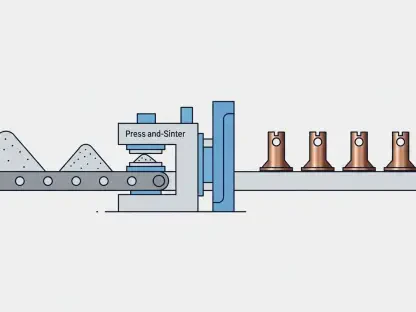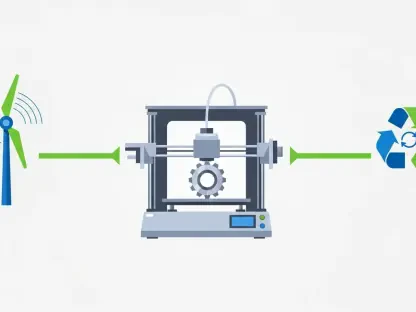What happens when a global automotive titan like Toyota Motor Corp. stumbles under the weight of international trade barriers? In the April-June quarter of this year, the company reported a staggering 37% profit decline, with earnings tumbling to 841 billion yen ($5.7 billion) from 1.33 trillion yen in the same period last year. This financial blow, announced from Tokyo, shines a spotlight on the escalating impact of U.S. tariffs on Japanese exports. As trade tensions reshape the landscape for multinational corporations, Toyota’s struggle serves as a stark reminder of how policy decisions in one country can ripple across the globe, affecting millions of consumers and employees alike.
Why Toyota’s Financial Fortunes Are Faltering
The scale of Toyota’s profit drop is staggering, and U.S. tariffs stand as the primary culprit behind this downturn. With a current tariff rate of 15% on Japanese automobiles—higher than the initially assumed 12.5%—the company saw its quarterly operating profit slashed by 450 billion yen ($3 billion). This isn’t merely a numbers game; it’s a direct hit to a corporation that has long dominated the global auto market. Beyond tariffs, unfavorable exchange rates have piled on additional pressure, making every transaction costlier for a business heavily reliant on international trade.
Despite these setbacks, there are glimmers of resilience in Toyota’s performance. Quarterly sales rose by 3% to 12 trillion yen ($82 billion), and global retail sales climbed to 2.4 million vehicles, up from 2.2 million in the prior year. These figures suggest that demand for Toyota’s vehicles remains strong across key markets like Japan, North America, and Europe. Yet, the question looms large: can sales growth alone counteract the relentless burden of external economic forces?
The Wider Lens: Tariffs as a Global Game-Changer
U.S. tariffs, especially those rooted in policies from President Donald Trump’s administration, are more than a financial thorn for Toyota—they’re a signal of broader shifts in global trade dynamics. These levies don’t just impact profit margins; they disrupt supply chains, inflate consumer prices, and force companies to rethink long-standing operational strategies. For Toyota, the U.S. market represents a critical revenue stream, making any trade barrier a significant obstacle to sustained growth.
This issue extends beyond a single automaker. The ripple effects of such policies touch countless stakeholders, from factory workers in manufacturing hubs to everyday drivers facing higher car prices. Industry observers note that tariffs highlight the fragility of interconnected economies, where a decision made in Washington can alter corporate fates halfway across the world. Understanding this interconnectedness is vital for grasping the true scope of Toyota’s current predicament.
Drilling Down: Multiple Forces Behind the Profit Slide
Several interwoven factors contribute to Toyota’s financial challenges this year. U.S. tariffs top the list, directly eating into earnings from exports to one of the company’s largest markets. Additionally, fluctuating exchange rates have made overseas operations more expensive, compounding the strain on the bottom line. These external pressures paint a complex picture of a company battling forces largely beyond its control.
Another layer of uncertainty emerges from the U.S.-Mexico-Canada Agreement (USMCA), which governs trade among the three nations. While designed to ease barriers, the potential for tariffs on vehicles produced in Mexico and Canada—where Toyota also operates—remains a lingering concern. This ambiguity forces strategic recalibrations, as the automaker must prepare for multiple scenarios in an already volatile environment.
Interestingly, not all news is grim. Toyota’s sales growth, both in revenue and units sold, underscores a persistent consumer appetite for its products. This contrast between rising demand and falling profits illustrates a unique tension: while the market still favors Toyota, external economic hurdles threaten to undermine even the strongest of performances.
Expert Perspectives: Industry Voices Weigh In
Analysts across the automotive sector have pinpointed Toyota as particularly vulnerable to U.S. tariffs, largely due to its substantial export volume to the American market. “No other Japanese automaker feels the sting of these trade policies quite like Toyota, given its deep reliance on U.S. sales,” remarked a prominent market strategist based in Tokyo. Such insights highlight the disproportionate burden placed on the company compared to its peers.
Toyota’s leadership has also sounded the alarm, revising the full-year profit forecast downward to 2.66 trillion yen ($18 billion) from an earlier projection of 3.1 trillion yen ($21 billion). This sharp adjustment, a far cry from last year’s nearly 4.8 trillion yen, reflects internal concerns about sustained profitability amid ongoing trade headwinds. These statements from within the company add a layer of urgency to the unfolding narrative.
The consensus among experts is clear: tariffs are a formidable obstacle, but not an insurmountable one. Discussions in industry circles often turn to how Toyota’s scale and innovation history might provide a buffer. Still, the immediate outlook remains cautious, as stakeholders brace for potential escalations in trade disputes that could further complicate the road ahead.
Toyota’s Counterplay: Strategies to Steer Through Turmoil
Faced with mounting challenges, Toyota is not sitting idle. The company has rolled out a multi-pronged approach to mitigate the damage from tariffs and currency fluctuations. Aggressive cost-cutting measures are at the forefront, aimed at trimming expenses wherever possible to preserve margins. Simultaneously, efforts to boost unit sales and enhance value chain profits are gaining traction, leveraging the recent uptick in global retail numbers.
Looking further ahead, Toyota is laying the groundwork for long-term stability. A new assembly plant in Toyota City, Aichi Prefecture, Japan, is slated to begin operations in the early 2030s. Described as a “plant of the future,” this facility will integrate cutting-edge technology and support a diverse workforce, ensuring domestic production capacity remains robust at 3 million vehicles annually. This initiative signals a commitment to innovation, even as short-term hurdles persist.
These strategies offer a glimpse into how a corporate giant adapts to adversity. For business leaders and consumers alike, Toyota’s response serves as a case study in balancing immediate financial pressures with visionary planning. While the effectiveness of these measures is yet to be fully realized, they underscore a proactive stance in navigating an unpredictable global trade landscape.
Reflecting on the Road Traveled
Looking back, Toyota’s steep profit decline in the April-June quarter stood as a stark testament to the power of U.S. tariffs and economic policies over even the mightiest of corporations. The financial hit, compounded by exchange rate woes and trade uncertainties, painted a challenging picture for the automaker. Yet, amidst the turmoil, signs of resilience emerged through sales growth and strategic foresight.
Moving forward, the path for Toyota and similar global players hinges on adaptability. Strengthening domestic production, refining cost structures, and advocating for clearer trade agreements could serve as vital steps to mitigate future shocks. As the automotive industry continues to grapple with geopolitical currents, the lessons from Toyota’s journey offer valuable insights for stakeholders at every level, pointing toward a need for agility and innovation in an ever-shifting economic terrain.









